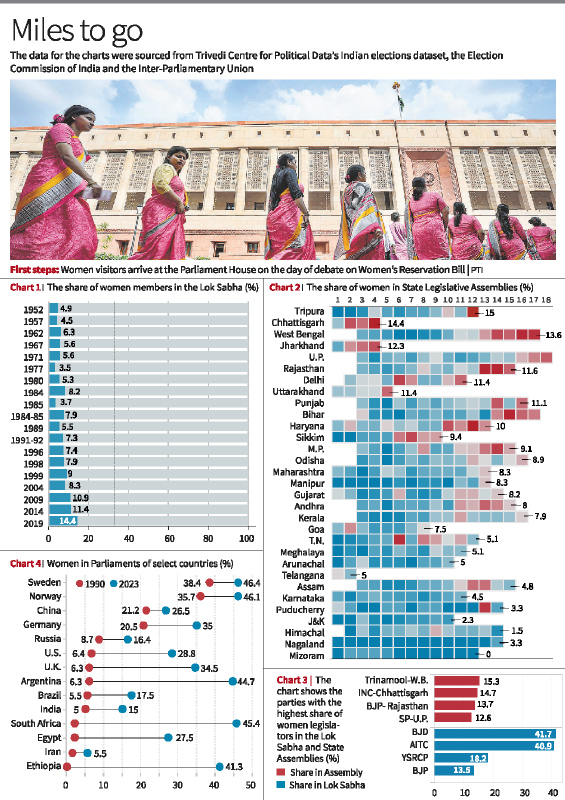
The Women's Reservation Bill has recently been passed by the Lok Sabha, aiming to reserve a third of the seats in both the Lok Sabha and State Assemblies for women. However, the earliest year of implementation will be 2029, contingent on the completion of the delimitation exercise in 2026. The current representation of women in the Lok Sabha is 15%, and it is even lower in the State Legislative Assemblies. The share of women parliamentarians has never exceeded 15% in India's electoral history, making it one of the lowest in the world.
History of the Women's Reservation Bill
The Women's Reservation Bill was initially introduced in 1996 but failed to receive approval. The bill has been reintroduced several times, finally getting passed as the 128th Constitutional Amendment Bill, 2023, or the Nari Shakti Vandan Adhiniyam. The bill mandates reserving 33.3% of the seats for women in the Lok Sabha and State Assemblies.
Example: The bill was first brought to the Lok Sabha during H.D. Deve Gowda's tenure but did not pass muster then.
Current Status of Women Representation
The current Lok Sabha has 82 women members, accounting for just 15% of the total seats. In State Assemblies, women representation is even lower, with just one state, Tripura, touching the 15% mark. States like Gujarat, Maharashtra, and Andhra Pradesh have less than 10% women MLAs.
Example: In the State Legislative Assembly of Tamil Nadu, women representation is as low as 5.1%.
Partywise Analysis
The Bharatiya Janata Party (BJP) has 13.5% of its Lok Sabha seats occupied by women. The Biju Janata Dal and Trinamool Congress lead in women representation with 41.7% and 40.9% respectively in the Lok Sabha.
Example: Trinamool Congress in West Bengal has the highest share of women MLAs at 15.3%.
International Comparison
When compared with BRICS nations, India's representation of women in Parliament is the second lowest, just above Iran. Countries like South Africa and Ethiopia have made significant progress in this area.
Example: South Africa has been successful in achieving higher women representation in their national legislatures over time.
Future Implications
The earliest implementation of the bill is expected in the 2029 general elections. This could significantly alter the gender dynamics within the Indian political system, but its effective implementation remains to be seen.
Example: The bill's implementation is contingent on a delimitation exercise scheduled for 2026.